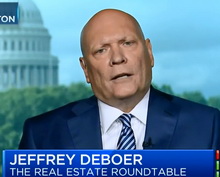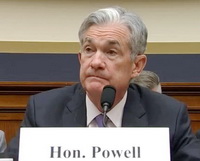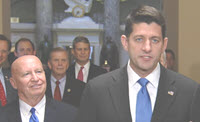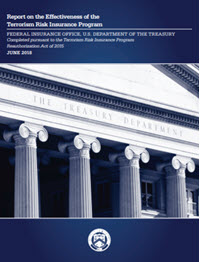Ventas’ Debra A. Cafaro is New Chair of FY2019 Roundtable Board of Directors
(WASHINGTON, D.C.) — The Real Estate Roundtable has elected Debra A. Cafaro (Chairman and Chief Executive Officer, Ventas, Inc.) as its new Chair for a three-year term starting July 1, 2018. She succeeds William C. Rudin (Co-Chairman and CEO, Rudin Management Company, Inc.). The Roundtable’s membership also approved a 23-member Board of Directors for its 2019 fiscal year (July 1, 2018 – June 30, 2019).
The Real Estate Roundtable is comprised of industry leaders from the nation’s top publicly-held and privately-owned real estate ownership, development, lending and management firms. Roundtable members focus on office, multifamily, retail, industrial, hospitality and other product types. The FY2019 Board is elected from the membership and includes four elected leaders of national real estate trade organizations from The Roundtable’s 17 partner associations.
Ms. Cafaro leads Ventas, Inc., an S&P 500 company and real estate investment trust with a portfolio of more than 1,200 seniors housing, healthcare and research properties in the United States, Canada and the United Kingdom.
“For two decades, The Real Estate Roundtable has taken a non-partisan approach aimed at providing practical policy solutions to lawmakers in DC,” Cafaro said. “I intend to carry this approach forward, by continuing to shape and articulate a unified real estate industry perspective for policymakers, and as the first woman elected to this role, to showcase the diversity of our highly respected membership on national public policies.”
Cafaro added, “Above all, we must uphold our independent and respected position on Capitol Hill, emphasizing the industry’s economic role as a job creator; cornerstone for retirement savings; and a significant source of state and local budget revenue that in turn funds essential services, including police and fire protection.”
Ms. Cafaro joined The Real Estate Roundtable’s Board of Directors in 2011, served as Board Secretary in 2015 and was elected Chair-Elect and Secretary in 2017.
The Roundtable’s Immediate Past Chair William Rudin noted, ““I was honored to serve as the Roundtable Chair the past three years and pleased that Debra will succeed me. She has an incredibly successful background, a sterling reputation, and the positive skills and qualities needed to successfully prioritize and advance the real estate industry’s policy agenda in Washington.”
Roundtable President and CEO Jeffrey D. DeBoer said, “The Roundtable now begins our 20th year of bringing together the leaders in our industry with the major industry trade associations to work positively with national lawmakers on policy issues related to our industry and the overall economy. Our past success has been directly related to our high quality membership, our fact-based, nonpartisan problem-solving approach to policy issues, and the collective work with the overall industry . We look forward to Deb Cafaro as our new Chair, not only to carry on our traditional approach to Washington, but also to lead The Roundtable to a new, enhanced level of effectiveness.”
Cafaro has received multiple professional recognitions, including one of the World’s 100 Most Powerful Women (Forbes Magazine), and one of the 50 Best-Performing CEOs in the World for four consecutive years (Harvard Business Review). She is also a member of the Business Council; serves on the board of PNC Financial Services Group Inc; and is an owner and member of the Management Committee of the National Hockey League’s Pittsburgh Penguins.
Also joining The Roundtable’s Board of Directors as of July 1 are: Thomas J. Baltimore, Jr., Chairman, President and CEO of Park Hotels & Resorts and Chair, Nareit®; Tray E. Bates, CCIM SIOR CIPS, Principal, Bates Commercial LLC and Former Commercial Committee Chair, National Association of Realtors®; Steven Hason, Managing Director and Head, Americas Real Estate & Infrastructure, APG Asset Management US Inc. and Chairman, Pension Real Estate Association; Kathleen McCarthy, Global Co-Head of Blackstone Real Estate, Blackstone; and Tara L. Piurko, Partner, Miller Thomson LLP and President, CREW Network. See the complete list of the FY2019 Roundtable’s Board of Directors here.
Stepping down from The Roundtable Board as of July 1 are: Kenneth F. Bernstein, President & Chief Executive Officer, Acadia Realty Trust and Immediate Past Chairman, International Council of Shopping Centers; Kevin Faxon, Managing Director – Head of Real Estate, Americas, J.P. Morgan Asset Management and Immediate Past Chairman, Pension Real Estate Association; Timothy J. Naughton, Chairman, CEO and President, AvalonBay Communities, Inc and Immediate Past Chair, Nareit®; and Robert S. Taubman, Chairman, President & CEO, Taubman Centers, Inc., and Chair Emeritus, The Real Estate Roundtable.
The Roundtable’s business and trade association leaders seek to ensure a cohesive industry voice is heard by government officials and the public about real estate and its important role in the global economy. Collectively, Roundtable members’ portfolios contain over 12 billion square feet of office, retail and industrial properties valued at more than $1 trillion; over 1.5 million apartment units; and in excess of 2.5 million hotel rooms. Participating trade associations represent more than 1.5 million people involved in virtually every aspect of the real estate business.
# # #









